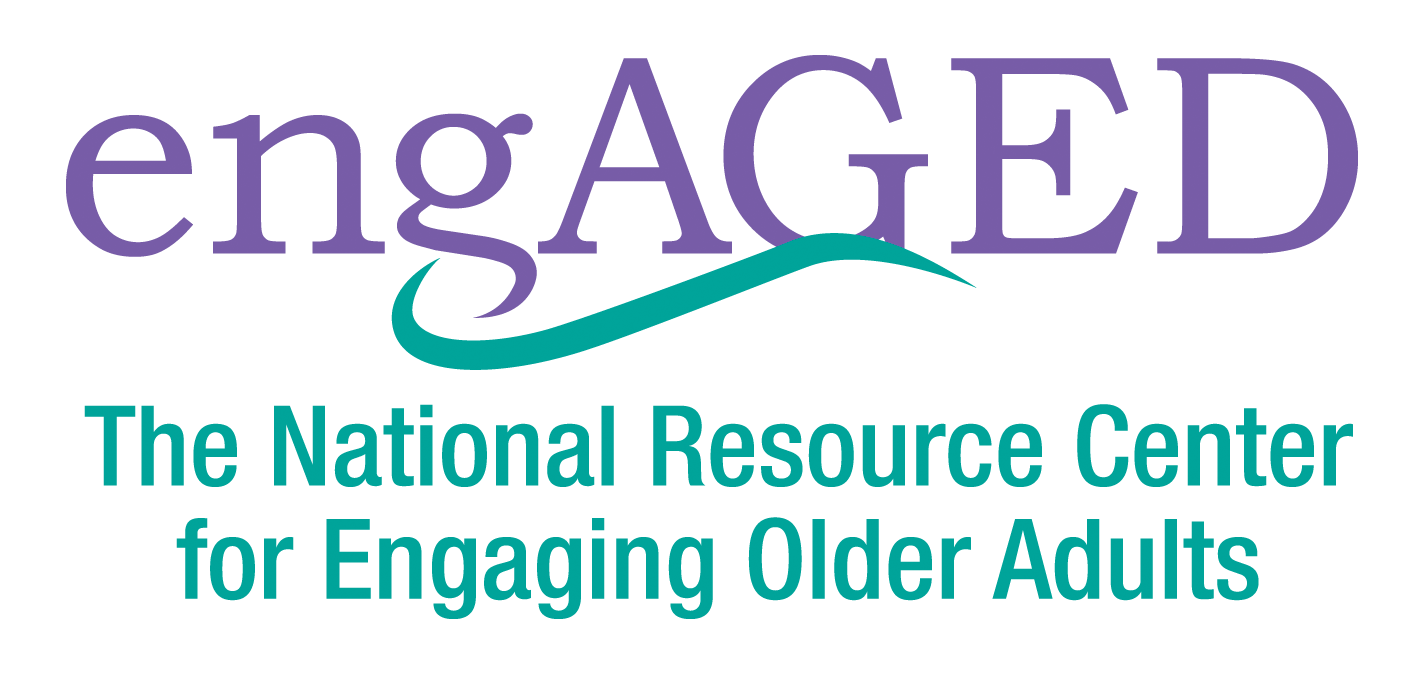Developing Engagement Opportunities Between Generations: Takeaways from the June engAGED Webinar
The June engAGED webinar highlighted examples of intergenerational programs the Aging Network and other partner organizations can replicate to offer in their communities.
Setting the Stage
Intergenerational programs are intentionally designed to build connections between people of different ages, which helps promote greater understanding and respect. Generations United shared that while types of intergenerational programs vary, common elements include being relational, reciprocal, empowering, responsive and inclusive. Like other programs, the COVID-19 pandemic impacted intergenerational opportunities, reinforcing the power of connection and leading to new virtual and hybrid pathways for engagement. Current trends include an increase in remote programs, such as technology and digital literacy programs; partnerships with colleges and universities on service-learning projects; use of outdoor spaces for programs; and creation of shared sites intentionally designed to provide services and programs to multiple generations at the same time.
Intergenerational Creative Expression Activities
Appalachian Agency for Senior Citizens (AASC)—a AAA in rural southwest Virginia—brings older adults from AASC’s adult day center together with children from AASC’s child day care center to participate in creative expression activities through the agency’s Art at Your Own PACE program. The older adults and children have created a Christmas ornament, pieces for AASC’s Christmas parade floats, a live mural with sidewalk chalk and other types of artwork. While the pandemic meant in-person activities had to be put on hold, AASC developed opportunities for older adults and children to complete projects together with both a child and older adult painting a portion of a picture. AASC also offers an intergenerational gardening program where older adults and children plant and maintain a vegetable garden as well as a flying free program where older adults and children decorate birdhouses together.
Bringing Teens and Older Adults Together
DOROT, a nonprofit in New York City, NY, offers a variety of intergenerational programs that bring together teenagers and older adults. Several of DOROT’s programs involve partnerships with local schools, including one-time opportunities for older adults to visit classrooms and a biweekly virtual or home visiting program that pairs teens with older adults. DOROT also offers a summer teen internship, an academic year internship and a next generation teen council, all of which bring older adults and teens together to meet regularly and learn from one another. These programs in particular focus on mutuality with the teens and older adults creating the programming and maintaining commitment to the ongoing process. The intergenerational program emphasizes continuous learning and engagement that benefits all generations involved.
Connecting Health Professional Students and Older Adults
Developed in response to the COVID-19 pandemic, the University of Colorado (CU) Anschutz Multidisciplinary Center on Aging’s Connecting Older Adults and Students Through Interprofessional Telecare (COAST-IT) program reduces social isolation and loneliness among older adults and offers health professional students clinical experiences. COAST-IT provides a social phone call between a student and older adult on a weekly or every other week basis. The program began with pairing CU Anschutz students with UCHealth Seniors Clinic patients and has since expanded to pair students with long-term care and assisted living community residents as well as older adults living independently in the community. For organizations interested in developing a similar program, stakeholder engagement is essential. Creating an engagement strategy and vision, identifying potential partners, keeping stakeholders involved, developing a process for continuous connection and producing a program evaluation plan are key components to successfully replicating this program.
Tips for Developing Intergenerational Programs
For those interested in developing intergenerational programs, Generations United shared the following tips.
Learn from others. Explore existing programs and assess why they may work in your community. Generations United and engAGED both have program examples from which organizations can learn.
Start small. Think about projects or services that you currently offer that can have an intergenerational element added or begin a pilot project.
Look local. Connect with members of your staff, consumers and families to see if they have connections to local schools, Scouts or 4-H Clubs. Also assess your neighborhood to determine what is nearby and if transportation is an issue.
Recognize commonality. Find the intergenerational intersection of your work and possible partners’ work. Identify the overlapping goals and objectives.
Be creative and persistent. Don’t hesitate to try something out and if it’s not working, change it.
Have fun. Make sure there are opportunities for the generations to laugh and celebrate together.
Additional Resources
To learn more about developing intergenerational programs, visit Generations United’s website, listen to the webinar recording and view the webinar slides.
